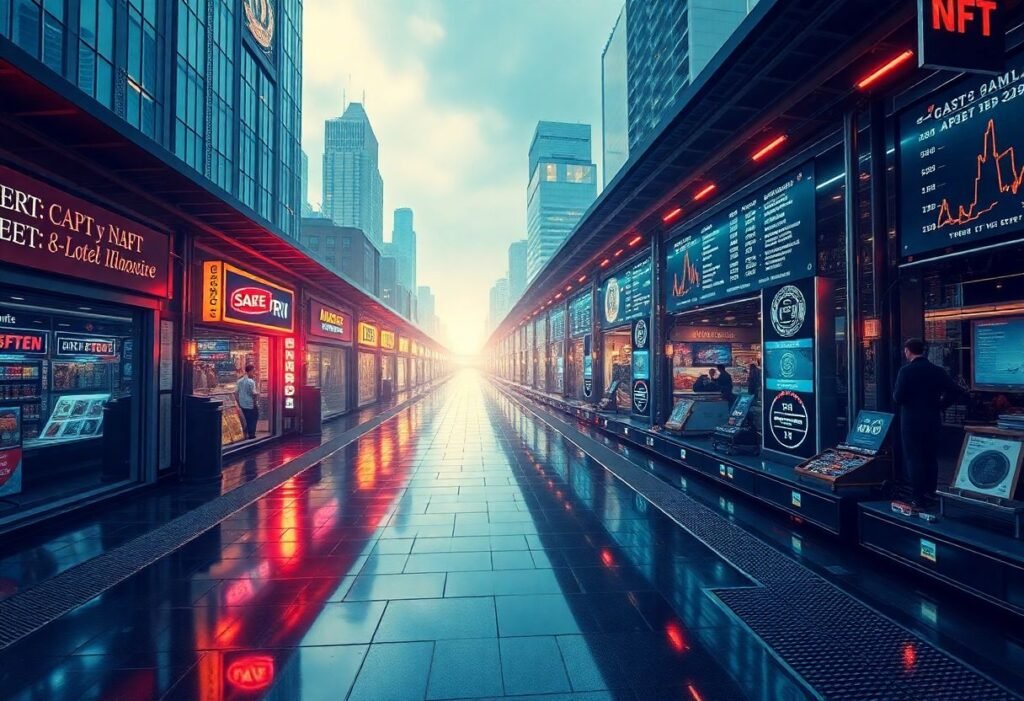The future of NFT markets and blockchain integration is rapidly evolving, paving the way for innovative solutions across various industries. As digital assets gain traction, understanding their potential and how they can be integrated into traditional markets becomes increasingly vital.
The Transformation of Ownership in Digital Art
The rise of Non-Fungible Tokens (NFTs) has reshaped how we perceive ownership in the digital art world. Prior to NFTs, artists struggled to monetize their work effectively. Blockchain technology provides a solution by establishing proof of ownership and provenance. This not only empowers artists but also enables collectors to invest in unique pieces that cannot be duplicated. The integration of NFTs allows for a seamless transfer of ownership while ensuring the rights of the creator are upheld. As the market continues to grow, we can expect more artists to join the space, leading to greater diversity and innovation.
Blockchain’s Role in Securing Transactions
Trust and security are paramount in any market, and blockchain excels in providing these essential qualities. By utilizing decentralized ledgers, NFT transactions become transparent and immutable. This reduces the risk of fraud and enables real-time tracking of ownership changes. Furthermore, smart contracts streamline operations, ensuring that artists receive royalties with each subsequent sale of their work. As NFT markets mature, leveraging blockchain technology will prove crucial for maintaining integrity and confidence among buyers and sellers alike.
Integration with Traditional Financial Systems
The integration of NFTs with traditional financial systems represents a significant shift in how we understand value. Financial institutions are beginning to explore ways to incorporate these digital assets into their offerings. This trend opens new avenues for investment and liquidity, allowing investors to diversify their portfolios. In addition, as regulatory frameworks develop, we can anticipate a more standardized approach to valuing and trading NFTs, ultimately leading to their broader acceptance in financial markets.
The Future of Gaming and Virtual Economies
The gaming industry stands at the forefront of NFT adoption. With the ability to buy, sell, and trade in-game assets as NFTs, players can genuinely own their digital belongings. This innovation is transforming virtual economies, granting players a real stake in the digital worlds they inhabit. As gaming companies increasingly integrate blockchain technology, the future of gaming is set to become a more immersive and rewarding experience. This evolution is fueled by the growing demand for personalized and authentic gaming experiences.
Environmental Sustainability and NFT Minting
The environmental concerns surrounding blockchain technology must not be overlooked. Many NFT platforms are actively seeking solutions to minimize their carbon footprint through the adoption of energy-efficient protocols. Innovations such as proof of stake are gaining traction, and future developments could lead to greener minting processes. As awareness of sustainability grows, the NFT market will need to address these challenges to attract environmentally conscious consumers and creators.
The Globalization of NFT Art Markets
Another remarkable aspect of the NFT phenomenon is its capacity to transcend geographical boundaries. Artists and collectors from around the world can connect and collaborate in ways that were previously unimaginable. This globalization of the NFT art market fosters a more inclusive environment, promoting diverse voices and perspectives. As the technology continues to evolve, it is likely that we will see the emergence of new cultures and communities centered around digital art, further enriching the landscape.
Disclaimer: This article does not constitute financial advice, and readers are encouraged to conduct their own research before investing in NFTs or blockchain technology.





















